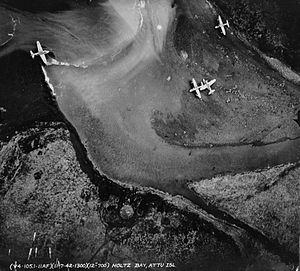
Attu is an island in the Near Islands. It is the westernmost point of the U.S. state of Alaska. The island became uninhabited in 2010, making it the largest uninhabited island that is part of the United States politically.

Kiska is one of the Rat Islands, a group of the Aleutian Islands of Alaska. It is about 22 miles (35 km) long and varies in width from 1.5 to 6 miles. It is part of Aleutian Islands Wilderness and as such, special permission is required to visit it. The island has no permanent population.

USS Abner Read (DD-526) was a Fletcher-class destroyer in the service of the United States Navy, named after Lieutenant Commander Abner Read, who fought in the American Civil War. The ship fought in World War II, seeing action in the Aleutian Islands Campaign and in 1943 she survived hitting a mine that blew off her stern. After repairs, she returned to service and operated in support of Allied forces in the New Guinea campaign and the Battle of Leyte. She was sunk in an air attack off Leyte on 1 November 1944.
Adak Island or Father Island is an island near the western extent of the Andreanof Islands group of the Aleutian Islands in Alaska. Alaska's southernmost city, Adak, is located on the island. The island has a land area of 274.59 square miles (711.18 km2), measuring 33.9 miles (54.5 km) long and 22 miles (35 km) wide, making it the 25th largest island in the United States.

The Aleutian Islands campaign was a military campaign fought between 3 June 1942 and 15 August 1943 on and around the Aleutian Islands in the American Theater of World War II. It was the only military campaign of World War II fought on North American soil.

The Eleventh Air Force (11 AF) is a Numbered Air Force of the United States Air Force Pacific Air Forces (PACAF). It is headquartered at Joint Base Elmendorf–Richardson, Alaska.
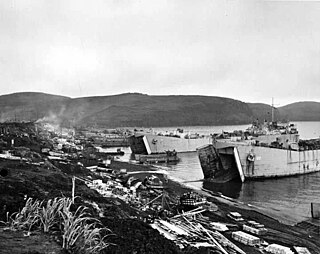
Operation Cottage was a tactical maneuver which completed the Aleutian Islands campaign. On August 15, 1943, Allied military forces landed on Kiska Island, which had been occupied by Japanese forces since June 1942. However, the Japanese had secretly abandoned the island two weeks earlier, and so the Allied landings were unopposed. Allied forces suffered over 300 casualties in total during the operation from Japanese landmines and booby traps, friendly fire incidents, and vehicle accidents.

Castner's Cutthroats was the unofficial name for the 1st Alaskan Combat Intelligence Platoon (Provisional), also known as Alaskan Scouts. Castner's Cutthroats fought during World War II and were instrumental in defeating the Japanese during the Aleutian Islands Campaign. The unit was composed of just sixty-five men selected to perform reconnaissance missions in the Aleutian Islands during the war.

Kiso (木曾) was the fifth and last of the five Kuma-class light cruisers, which served with the Imperial Japanese Navy during World War II. She was named after the Kiso River in central Honshū, Japan.
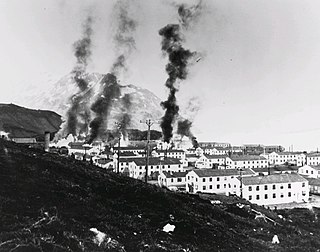
The Battle of Dutch Harbor took place on 3-4 June 1942, when the Imperial Japanese Navy launched two aircraft carrier raids on the Dutch Harbor Naval Operating Base and U.S. Army Fort Mears at Dutch Harbor on Amaknak Island, opening the Aleutian Islands campaign of World War II. The bombing marked the first aerial attack by an enemy on the continental United States and was the second time in history that the continental U.S. was bombed by someone working for a foreign power, the first being the accidental bombing of Naco, Arizona, in 1929.

The Battle of Attu, which took place on 11–30 May 1943, was fought between forces of the United States, aided by Canadian reconnaissance and fighter-bomber support, and Japan on Attu Island off the coast of the Territory of Alaska as part of the Aleutian Islands campaign during the American Theater and the Pacific Theater. Attu is the only land battle in which Japanese and American forces fought in snowy conditions, in contrast with the tropical climate in the rest of the Pacific. The battle ended when most of the Japanese defenders were killed in brutal hand-to-hand combat after a final banzai charge broke through American lines.

The Japanese occupation of Kiska took place between 6 June 1942 and 28 July 1943 during the Aleutian Islands campaign of the American Theater and the Pacific Theater of World War II. The Japanese occupied Kiska and nearby Attu Island in order to protect the northern flank of the Japanese Empire.

The Japanese Occupation Site on Kiska island in the Rat Islands group of the Aleutian Islands of Alaska is where the Imperial Japanese Navy attacked and occupied the island in World War II, as one of the only two enemy invasion sites in North America during the war. The Japanese built defenses and other infrastructure on the island before abandoning it in 1943 after losing the Battle of Attu. American and Canadian forces reoccupied the abandoned island, and departed the island in 1946. Now a part of the Alaska Maritime National Wildlife Refuge, the central portion of the island, where these military activities were concentrated, was designated a National Historic Landmark in 1985.
Amchitka Air Force Base is an abandoned Air Force Base located on Amchitka, in the Rat Islands group of the Aleutian Islands in southwest Alaska.

The military history of the Aleutian Islands began almost immediately following the purchase of Alaska from the Russian Empire by the United States in 1867. Prior to the early 20th century, the Aleutian Islands were essentially ignored by the United States Armed Forces, although the islands played a small role in the Bering Sea Arbitration when a number of British and American vessels were stationed at Unalaska to enforce the arbitrators' decision. By the early 20th century, a number of war strategies examined the possibility of conflict breaking out between the Empire of Japan and the United States. While the Aleutian Islands were seen as a potential staging point for invasions by either side, this possibility was dismissed owing to the islands' dismal climate. In 1922, the Washington Naval Treaty was signed, after which the United States Navy began to take an interest in the islands. However, nothing of significance was to materialize until World War II.
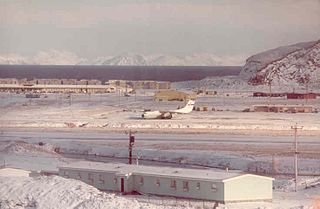
Naval Air Facility Adak, was a United States Navy airport located west of Adak, on Adak Island in the U.S. state of Alaska. After its closure in 1997, it was reopened as Adak Airport. The facility was designated a National Historic Landmark for its role in World War II, although most of its elements from that period have been demolished or lie in ruins.
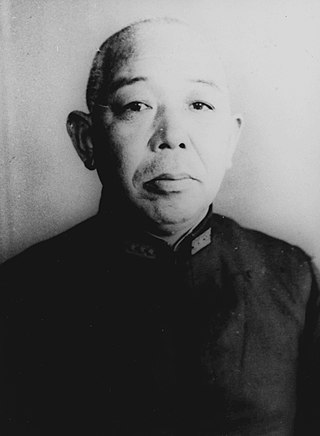
Shiro Kawase was a vice admiral in the Imperial Japanese Navy during World War II. He was a torpedo expert and his extensive experience as a commander of destroyers and destroyer formations made him more knowledgeable about the escort of convoys than most Japanese commanders of his time. He is best known for his command of the 5th Fleet during the latter stages of the Aleutians campaign in the spring and summer of 1943.

The landing at Amchitka on 12 January 1943 was the unopposed amphibious landing operation and occupation of Amchitka island by American forces during the Aleutian Islands campaign during World War II.
VP-3 was a Patrol Squadron of the U.S. Navy. The squadron was established as Patrol Squadron 16-F (VP-16F) on 2 January 1937, redesignated Patrol Squadron 16 (VP-16) on 1 October 1937, redesignated Patrol Squadron 41 (VP-41) on 1 July 1939, redesignated Bombing Squadron 136 (VB-136) on 1 March 1943, redesignated Patrol Bombing Squadron 136 (VPB-136) on 1 October 1944, redesignated Patrol Squadron 136 (VP-136) on 15 May 1946, redesignated Medium Patrol Squadron (landplane) 3 (VP-ML-3) on 15 November 1946, redesignated Patrol Squadron 3 (VP-3) on 1 September 1948, and was disestablished on 1 November 1955. It was the second squadron to be designated VP-3, the first VP-3 was redesignated VP-32 on 1 July 1939.
I-69, later I-169, was an Imperial Japanese Navy Kaidai-class cruiser submarine of the KD6 sub-class commissioned in 1935. She served in World War II, during which she conducted six war patrols and took part in operations supporting the attack on Pearl Harbor, the Battle of Midway, the Guadalcanal campaign, the Aleutians campaign, and the defense of the Gilbert Islands. She sank in a diving accident in April 1944.
